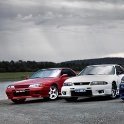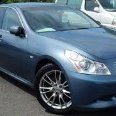Nissan Silvia S13 - The next logical choice behind a Skyline?
Announcements
-
Similar Content
-
Latest Posts
-
By Dose Pipe Sutututu · Posted
Depending on conversion rates and when you factor in Australian David Jones pricing on fabrication these days, this kit (bolt on affair, zero fab) nearly seems worth every dollar. https://www.spectrummotorsportssolutions.com/products/copy-of-gt-r-rb26-single-turbocharger-kit Their disclaimer: **Please note - While this kit includes everything needed to convert to Single Turbo without additional Fabrication, Professional installation is suggested. The PS reservoir will need to be moved from the stock location, however everything else fits R32/33/34 GTR w/ OEM AC and Power Steering Pump**. -
I finally figured this out. That green part, can actually be pushed out. Mine was on the wrong angle because I messed around with it. So what needs to be done is the clockspring to be removed (the loom can't be removed so you need to pull the cable towards you to remove it off the shaft then let it rest on something so it's not dangling) Then you just make sure that the 3 green dots form a triangle and that the 3 holes on the steering wheel inserts into the 3 holes on the green part (you need to push out the green part to do this otherwise you'll keep having the issue with the indicators not cancelling)
-
By robbo_rb180 · Posted
Welcome back, If looking for a quality workshop AK Racing are the go to for everything these days. No fancy socials or attention seeking just quality work and good people. Can do everything from general servicing to full race builds that do very well at local and international events. -
By TurboTapin · Posted
Let me know how much you're looking to get! Thanks. -
Oh very very true ! I'm honestly thinking about taking my entire R33 series 3 red stitch GTR interiour out of my car, selling it and buying a small house ! I spotted as pair of R400 GTR seats on GumBay on the interweb and they were asking around the 12K mark !
-








Recommended Posts
Create an account or sign in to comment
You need to be a member in order to leave a comment
Create an account
Sign up for a new account in our community. It's easy!
Register a new accountSign in
Already have an account? Sign in here.
Sign In Now